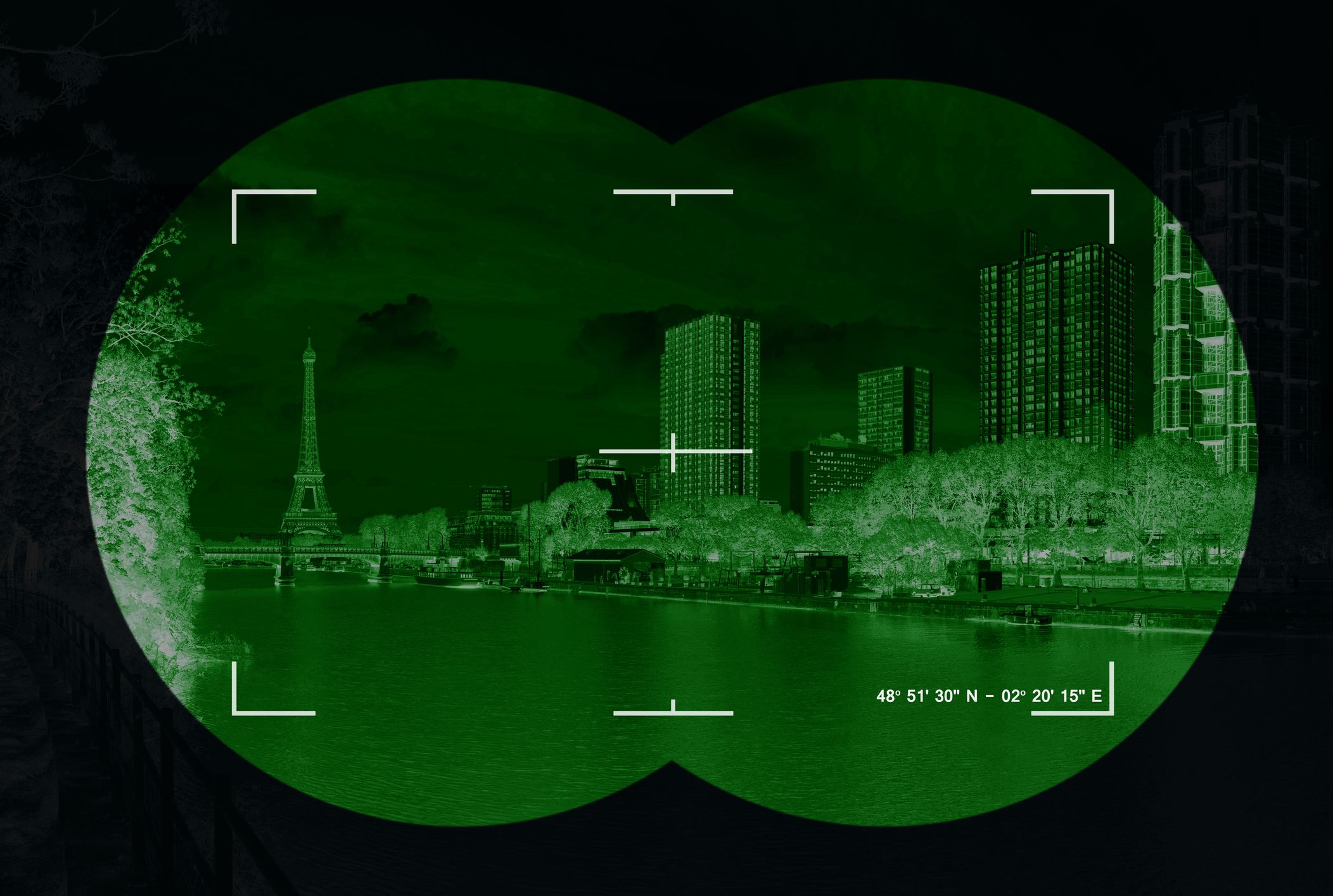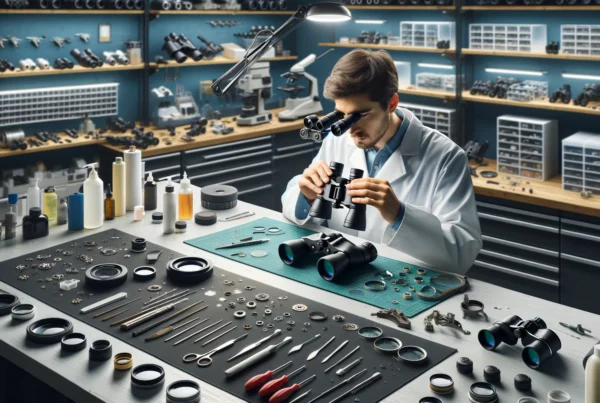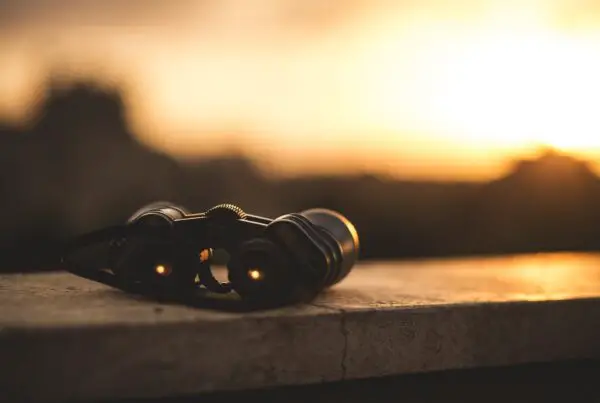Contents
- How Night Vision Binoculars Work?
- Applications of Night Vision Binoculars
- How to Choose Night Vision Binoculars
- Components of Night Vision Binoculars:
- Generations of Night Vision Technology:
- Tips for Using Night Vision Binoculars Effectively:
- Future Developments in Night Vision Technology:
- Frequently Asked Questions (FAQs)
- Bottom Line
In a world that never sleeps, the ability to see clearly in low-light or dark conditions is invaluable. This is where night vision binoculars come into play.
Night vision binoculars are a type of optical device that allows you to see in low-light or no-light conditions. They are used in a variety of applications, including military operations, surveillance, hunting, wildlife observation, and more.
In this article, we will explore how night vision binoculars work and their various applications.
How Night Vision Binoculars Work?
Night vision binoculars work by amplifying the available light in the environment. They use a combination of lenses, image intensifiers, and electronic components to create a visible image in low-light conditions.
Image Intensifier Tube
The image intensifier tube is the most important component of night vision binoculars. It takes the available light and converts it into an electrical signal, which is then amplified and displayed on a screen.
Types of Night Vision Technology
There are two main types of night vision technology: image intensification and thermal imaging. Image intensification technology works by amplifying the available light, while thermal imaging technology detects the heat emitted by objects and converts it into a visible image.
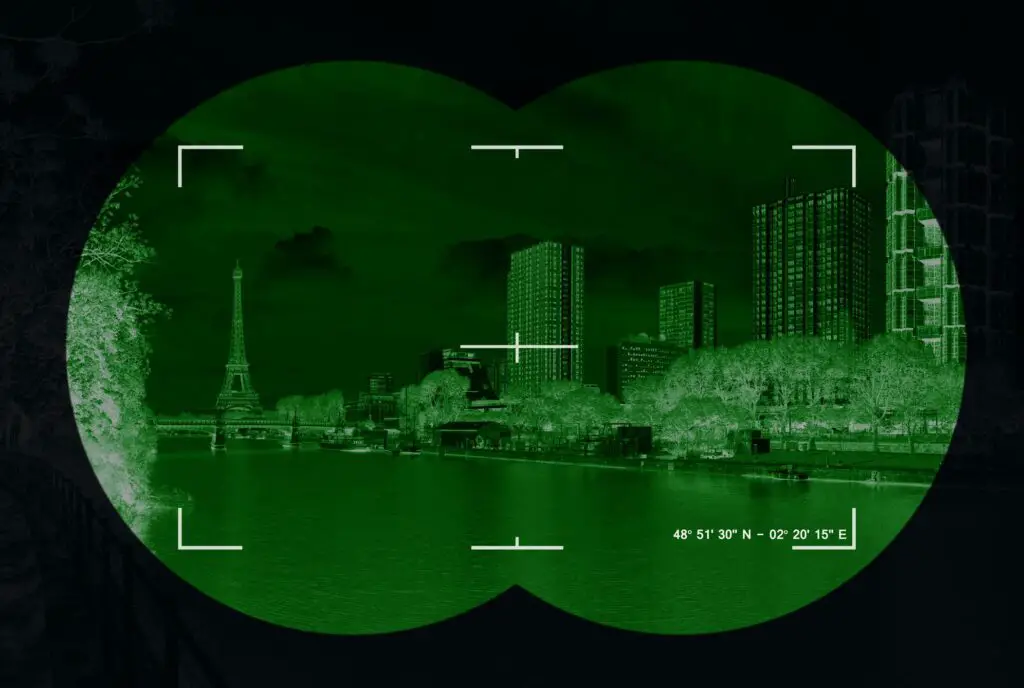
Applications of Night Vision Binoculars
Night vision binoculars have a wide range of applications, including:
- Military Operations: Night vision binoculars are used by military personnel to carry out operations in low-light or no-light conditions. They allow soldiers to see their surroundings and identify potential threats.
- Surveillance: Night vision binoculars are used by law enforcement agencies and private investigators to conduct surveillance operations in low-light conditions. They allow investigators to observe their targets without being detected.
- Hunting: Night vision binoculars are used by hunters to track and observe game in low-light conditions. They allow hunters to see their prey without disturbing them.
- Wildlife Observation: Night vision binoculars are used by nature enthusiasts to observe nocturnal animals in their natural habitat. They allow observers to see animals that are active at night, such as owls, bats, and foxes.
- Security: Night vision binoculars are used by security personnel to monitor large areas in low-light conditions. They allow security personnel to detect potential threats and respond quickly.
How to Choose Night Vision Binoculars
When choosing night vision binoculars, there are several factors to consider:
- Generation: Night vision binoculars are classified into four generations, with each generation offering improved image quality and performance. Generation 1 binoculars are the most affordable, while Generation 4 binoculars are the most advanced and expensive.
- Magnification: The magnification of binoculars determines how far you can see. For most outdoor activities, a magnification of 8x to 10x is ideal.
- Image Quality: The quality of the image depends on the quality of the lenses and image intensifier tube used. Look for binoculars with high-quality lenses and image intensifier tubes to ensure a clear and sharp image.
- Field of View: The field of view is the area that you can see through the binoculars. A wider field of view is better for tracking moving objects, while a narrower field of view is better for observing stationary objects.
- Durability: Look for binoculars that are built to last, with features such as rubber coating and textured grip for added no-slip security7. Also, check the JIS Waterproof Scale rating to ensure that the binoculars can withstand the amount of water you will be exposed to.
Components of Night Vision Binoculars:
Night vision binoculars consist of several essential components that work together to provide an enhanced viewing experience:
- Objective Lens: The objective lens is responsible for collecting and focusing the incoming light or infrared radiation.
- Image Intensifier Tube: This tube is the heart of the night vision system. It amplifies the incoming light signals by converting photons into electrons and multiplying their numbers, resulting in a brighter image.
- Eyepiece: The eyepiece magnifies and displays the intensified image to the viewer’s eyes, allowing for comfortable and clear viewing.
- Power Source: Night vision binoculars typically require batteries to power the image intensifier tube and other electronic components.
Generations of Night Vision Technology:
Night vision technology has evolved over the years, leading to different generations of night vision devices. These generations, often referred to as Gen 1, Gen 2, Gen 3, and so on, represent advancements in image quality, sensitivity, and overall performance.
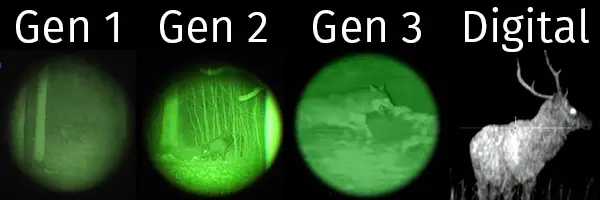
Gen 1 Devices:
Gen 1 devices were the earliest night vision binoculars available to the public. They provided a significant improvement in low-light vision, but had limitations in terms of image quality and range.
Gen 2 Devices:
Gen 2 devices introduced improvements such as better resolution, longer range, and reduced noise.
Gen 3 Devices:
Gen 3 devices further enhanced performance by offering increased sensitivity, clarity, and the ability to operate in extremely low-light conditions.
Tips for Using Night Vision Binoculars Effectively:
To maximize the effectiveness of night vision binoculars, here are a few tips to keep in mind:
- Understand Ambient Light Conditions: Familiarize yourself with the available light conditions and adjust the binoculars’ settings accordingly. Some devices may have different modes optimized for specific lighting situations.
- Adjust Focus and Diopter Settings: Properly calibrate the focus and diopter settings to achieve a clear and sharp image. This is especially important if you wear glasses or have different visual acuity in each eye.
- Proper Use of Infrared Illuminators: In total darkness, activate the infrared illuminators if your binoculars have this feature. These illuminators emit infrared light that is invisible to the naked eye, but can improve visibility through the binoculars.
- Maintenance and Care: Follow the manufacturer’s guidelines for cleaning, storage, and maintenance to ensure optimal performance and longevity of your night vision binoculars. Avoid exposing them to extreme temperatures or harsh environments.
Future Developments in Night Vision Technology:
Night vision technology continues to advance, paving the way for exciting possibilities in the future. Here are some potential developments to look forward to:
- Advancements in Image Sensor Technology: Ongoing research and development may lead to improved image sensor technology, resulting in higher resolution, increased sensitivity, and reduced power consumption.
- Integration with Other Technologies: Night vision binoculars may integrate with other technologies, such as augmented reality overlays, GPS tracking, and wireless connectivity. This integration could enhance situational awareness, provide real-time information, and offer a more immersive viewing experience.
- Expanded Applications: As night vision technology improves, the applications of night vision binoculars are likely to expand. Industries such as autonomous vehicles, robotics, and medical imaging may benefit from these advancements, opening up new possibilities for their use.
Frequently Asked Questions (FAQs)
How do night vision binoculars differ from regular binoculars?
Night vision binoculars incorporate specialized technology that amplifies the available light or converts it into visible images. Regular binoculars, on the other hand, do not have this capability and rely solely on the ambient light for viewing.
What is the difference between infrared binoculars and night vision binoculars?
Infrared binoculars and night vision binoculars are often used interchangeably, but they have slight differences. Infrared binoculars rely solely on infrared radiation to create images, whereas night vision binoculars can amplify both visible light and infrared radiation for enhanced visibility.
Are night vision binoculars effective in complete darkness?
Night vision binoculars are designed to work in low-light conditions. While they can enhance visibility in very dark environments, complete darkness may still limit their effectiveness. Some night vision binoculars come equipped with infrared illuminators that emit infrared light to improve visibility in total darkness.
Can I use night vision binoculars during the day?
It is not recommended to use night vision binoculars during the day. The intense daylight can damage the sensitive components of the device. Additionally, the bright sunlight can overload the image intensifier tube, resulting in poor image quality.
What are the main factors to consider when buying night vision binoculars?
When purchasing night vision binoculars, consider factors such as the generation of night vision technology, magnification, field of view, resolution, image quality, infrared capabilities, ergonomics, and budget. These factors will help you choose the right binoculars for your specific needs.
How far can I see with night vision binoculars?
The viewing distance of night vision binoculars depends on various factors, including the generation of night vision technology, the available light conditions, and the specific model. Higher generations of night vision technology generally offer longer viewing distances.
Can night vision binoculars be used for stargazing?
Night vision binoculars are not typically designed for stargazing purposes. They are optimized for low-light and near-dark conditions on the ground. Astronomical binoculars or telescopes are better suited for stargazing due to their specific optics and magnification.
Are night vision binoculars legal to use?
The legality of using night vision binoculars depends on your location and the specific regulations of that area. In many countries, night vision devices are legal for civilian use. However, restrictions may apply to the use of certain generations or models. It is important to familiarize yourself with the local laws and regulations regarding the use of such devices.
Can night vision binoculars be used for photography or recording?
Some night vision binoculars have built-in capabilities for capturing photos or videos. These models usually have additional features, such as integrated digital cameras or recording capabilities. However, the image quality may not be as high as dedicated night vision cameras.
Can night vision binoculars be used underwater?
Most night vision binoculars are not designed for underwater use. They are not waterproof and may get damaged if submerged in water. It is essential to check the manufacturer’s specifications and recommendations before using them in wet or underwater environments.
Bottom Line
Night vision binoculars are a valuable tool for a variety of applications, from military operations to wildlife observation. They work by amplifying the available light in the environment and converting it into a visible image.
When choosing night vision binoculars, consider factors such as generation, magnification, image quality, field of view, and durability. With the right pair of binoculars, you can see the world in a whole new way, even in the darkest of conditions.

A Binoculars enthusiast, who love exploring skies and watching birds. It is my hobby to collect Binoculars of different kinds and try to explore the world through various lenses. This is all I do to explore happiness by magnifying my beautiful world.

